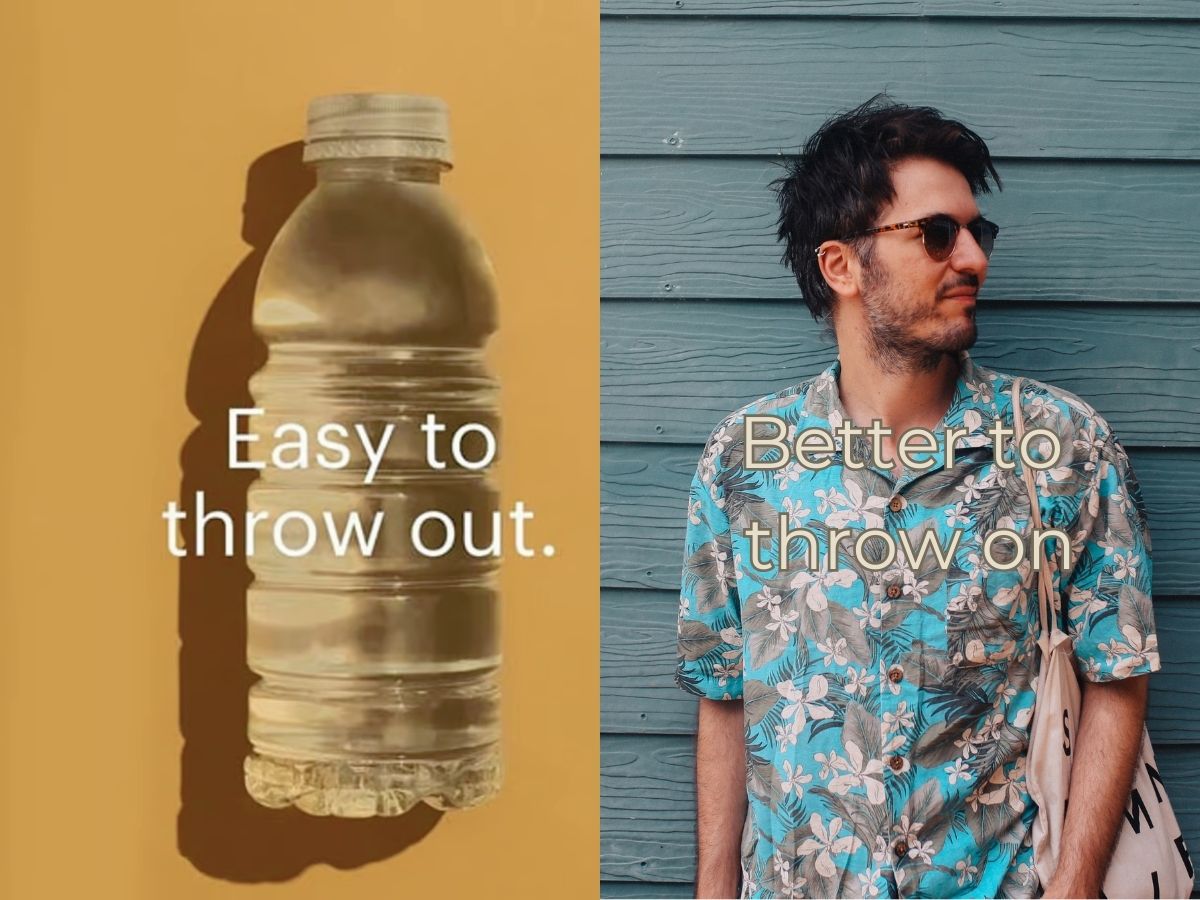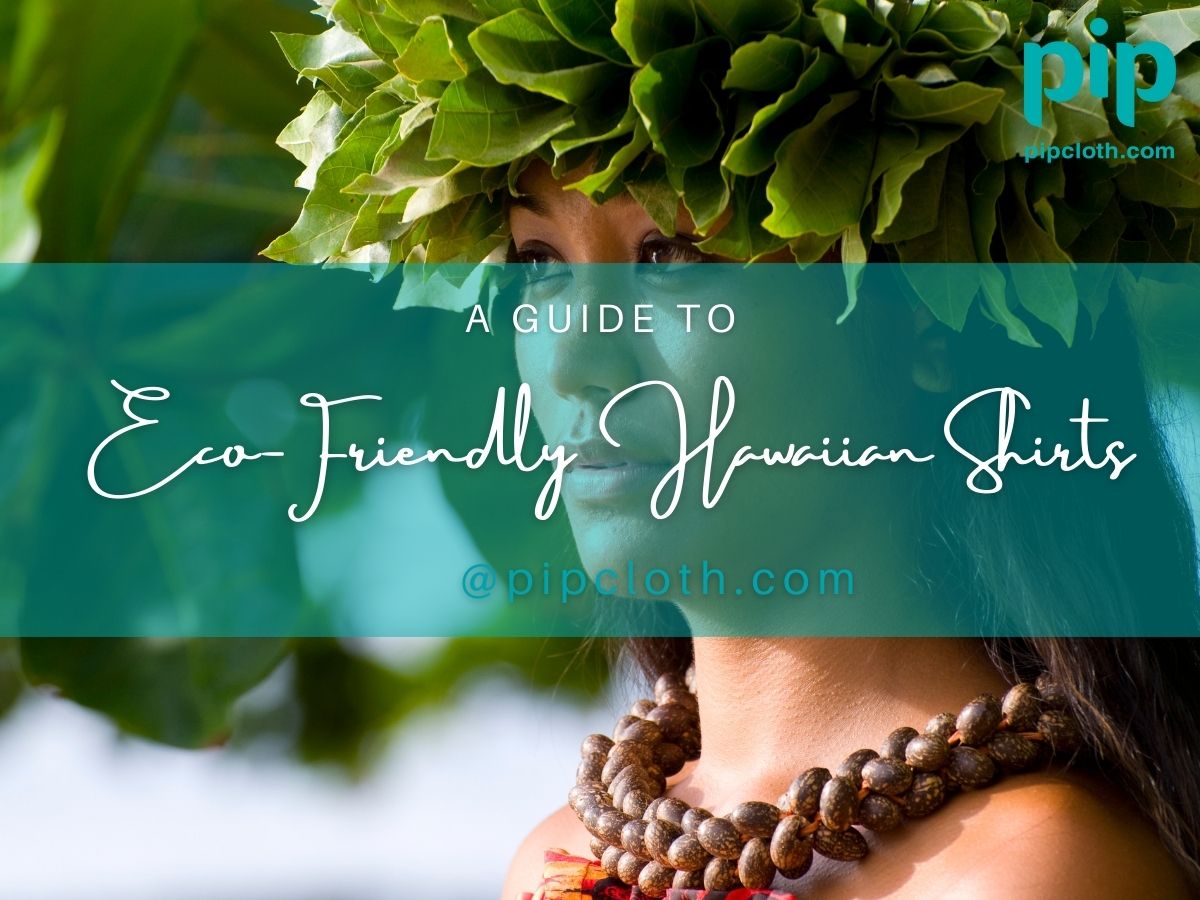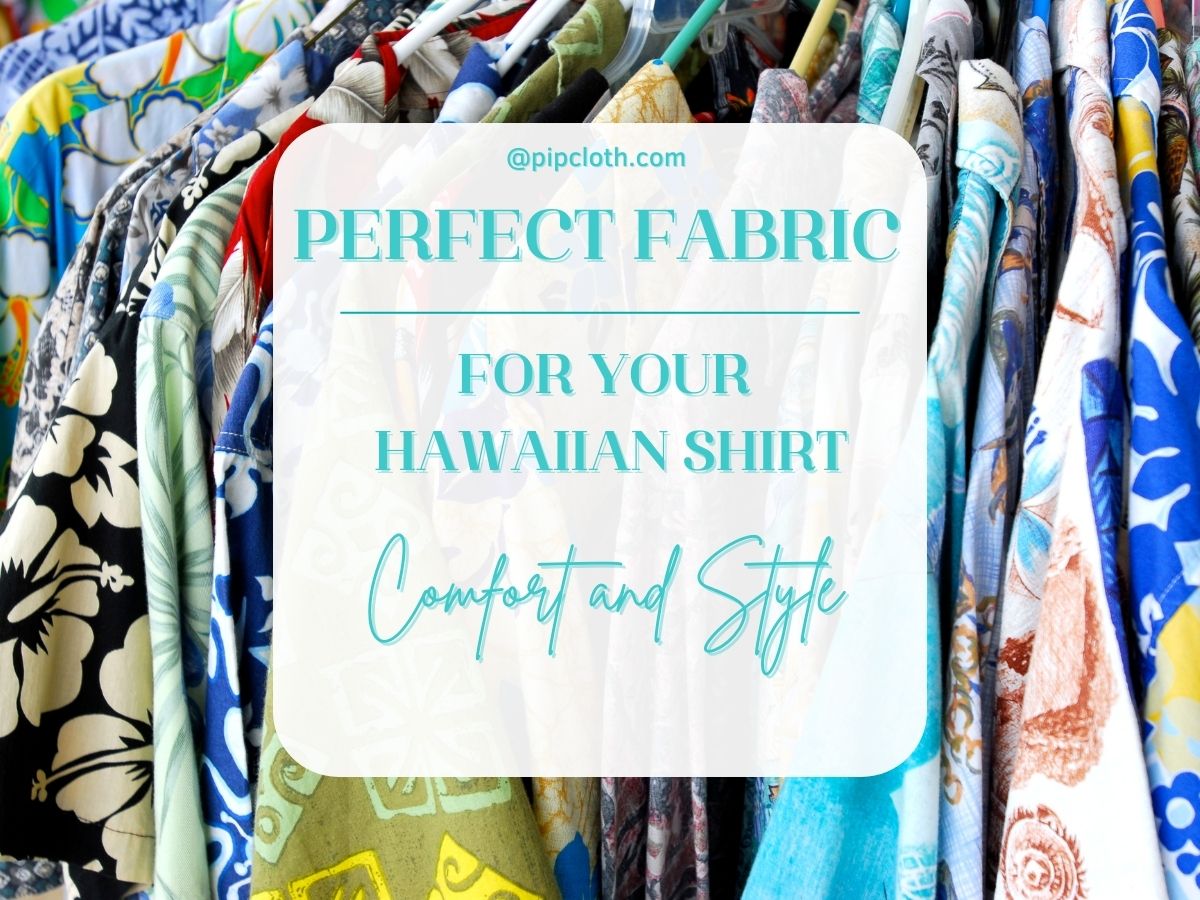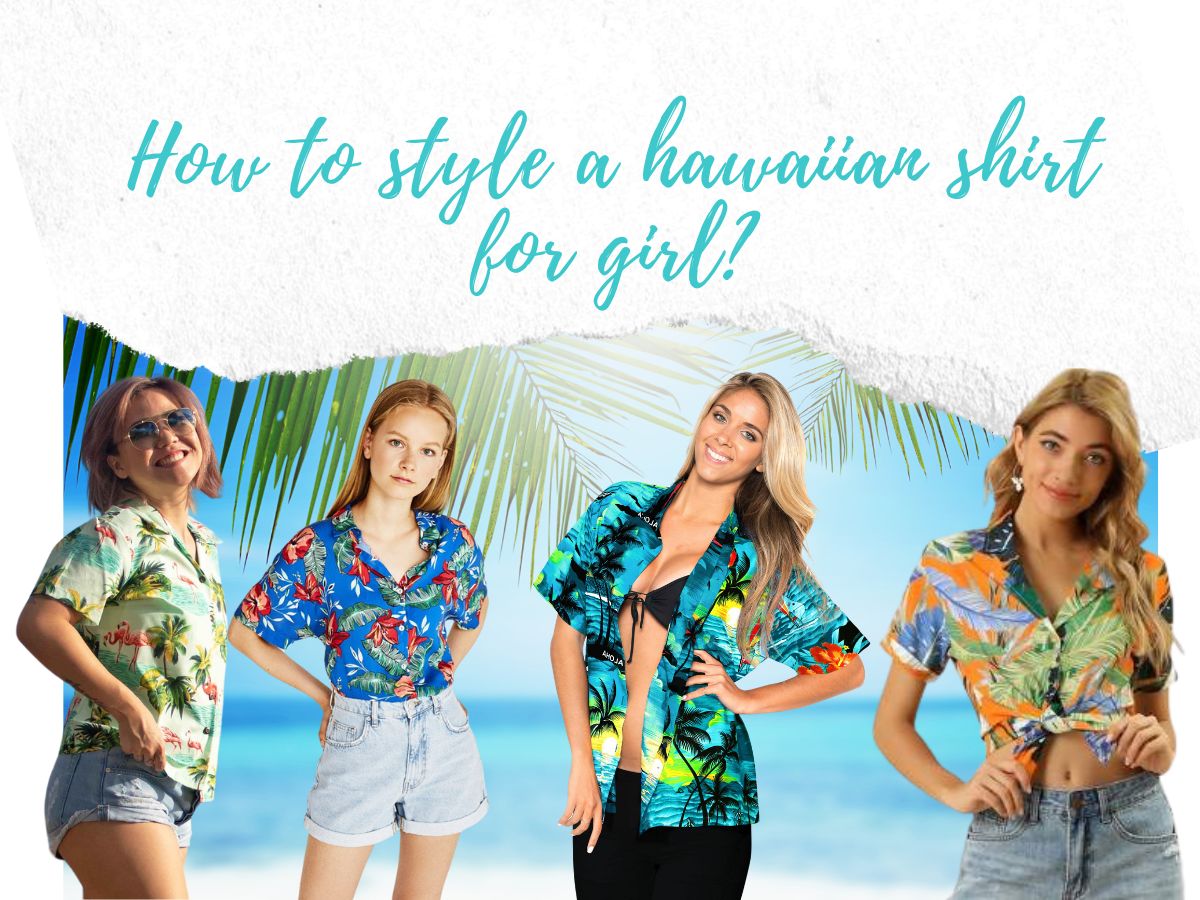As the world becomes increasingly aware of the urgent need for sustainability, the fashion industry is undergoing a profound transformation. Consumers are demanding eco-friendly alternatives to their favorite garments, and Hawaiian shirts, with their timeless appeal and vibrant designs, are no exception. In fact, a recent survey by the Fashion Sustainability Index revealed that 68% of consumers prioritize sustainability when purchasing clothing. This comprehensive guide will take you on a journey through the world of eco-friendly Hawaiian shirts, exploring the environmental impact of traditional production methods, the rise of sustainable materials and practices, and the future of green fashion in this beloved category.
The fashion industry is one of the largest polluters globally, accounting for 10% of global carbon emissions and 20% of wastewater. The production of a single cotton shirt can require up to 2,700 liters of water, and the use of harmful chemicals and dyes can contaminate waterways and endanger the health of workers and communities. In contrast, eco-friendly Hawaiian shirts offer a sustainable solution that minimizes environmental damage without compromising on style or quality.
Sustainable Materials: The Foundation of Eco-Friendly Hawaiian Shirts
The journey towards eco-friendly Hawaiian shirts begins with the materials used in their production. Organic cotton, grown without the use of harmful pesticides and requiring 91% less water than conventional cotton, has emerged as a popular choice for sustainable fashion brands. Patagonia, a leader in eco-friendly apparel, has been using organic cotton in their products since 1996, reducing their carbon footprint by 18% and water usage by 91%.
Recycled polyester, made from post-consumer plastic bottles or textile waste, is another innovative material used in eco-friendly Hawaiian shirts. By diverting waste from landfills and reducing the need for virgin materials, recycled polyester can lower energy consumption by 30-50% compared to traditional polyester production. Brands like Vissla and Tori Richard have incorporated recycled polyester into their Hawaiian shirt collections, contributing to a more circular economy.

Bamboo fabric, derived from the fast-growing and renewable bamboo plant, has also gained popularity in the sustainable fashion world. Bamboo requires minimal water and pesticides to grow, absorbs 35% more carbon dioxide than trees, and biodegrades naturally. Bamboo fabric is not only eco-friendly but also boasts a range of desirable properties, including softness, breathability, and moisture-wicking capabilities, making it an ideal choice for Hawaiian shirts worn in tropical climates.
Natural Dyes and Low-Impact Colorants: Adding Vibrancy to Sustainability
The vibrant colors and intricate patterns of Hawaiian shirts are an integral part of their charm, but traditional dyeing methods can have a significant environmental impact. Fortunately, eco-friendly alternatives are available, such as natural dyes derived from plants, minerals, or insects. These biodegradable and non-toxic dyes not only reduce chemical pollution but also create unique, earthy color palettes that showcase the beauty of nature. For example, the brand Aloha Shirt Shop uses natural dyes extracted from plants like indigo, turmeric, and madder root to create their stunning designs.
Low-impact synthetic dyes, which utilize advanced technologies to minimize water usage and chemical runoff, provide another sustainable option for Hawaiian shirt manufacturers. The Bluesign® system, a strict standard for environmentally friendly textile production, has been adopted by brands like Seaplane and Reyn Spooner to ensure their dyeing processes are as eco-friendly as possible. By adhering to these standards, companies can reduce water consumption by 50%, energy usage by 30%, and chemical usage by 15%.
Ethical Manufacturing and Zero-Waste Initiatives: Empowering Workers and Reducing Waste
Sustainability in the Hawaiian shirt industry extends beyond materials and dyes; it also encompasses ethical manufacturing practices and waste reduction initiatives. Fair trade certifications, such as those provided by Fair Trade USA, ensure that workers are paid living wages, work in safe conditions, and have access to education and healthcare. By supporting fair trade certified brands, consumers can contribute to the empowerment of workers and the development of their communities. Brands like Toad&Co and Prana have made fair trade a core part of their business model, ensuring that their Hawaiian shirts are not only environmentally friendly but also socially responsible.
Zero-waste initiatives are another crucial aspect of eco-friendly Hawaiian shirt production. Innovative brands are adopting cutting-edge techniques to minimize fabric waste, such as using digital pattern-making software to optimize layouts and reduce excess material. For example, the brand Tonlé creates their Hawaiian shirts using a zero-waste design process, utilizing every scrap of fabric to create unique patchwork designs. By repurposing fabric scraps and partnering with textile recycling facilities, these brands are working towards a more circular and sustainable fashion economy.

Can I wear a Hawaiian shirt with jeans?
Packaging and Distribution: The Final Frontier of Sustainability
The sustainability journey of an eco-friendly Hawaiian shirt doesn’t end with its production; packaging and distribution also play a vital role. Forward-thinking brands are embracing recycled and biodegradable packaging materials, such as recycled paper and cardboard or compostable plastic alternatives made from plant-based sources. These materials not only reduce waste but also minimize the use of virgin resources. Brands like Faherty and Taylor Stitch have implemented eco-friendly packaging solutions, using 100% recycled and recyclable materials for their shipping boxes and mailers.
Minimalist packaging design is another effective strategy for reducing waste in the Hawaiian shirt industry. By eliminating unnecessary packaging components and optimizing box sizes, brands can minimize material usage and reduce transportation emissions. For example, the brand Outerknown ships their Hawaiian shirts in slim, recyclable envelopes, reducing packaging waste by 70% compared to traditional boxes.
Carbon-neutral shipping is an increasingly popular option for eco-conscious Hawaiian shirt brands. By partnering with logistics providers that offset their carbon emissions through reforestation projects or investments in renewable energy, these brands can minimize their environmental impact even further. Brands like Allbirds and Tentree have committed to 100% carbon-neutral shipping, ensuring that their Hawaiian shirts reach customers with the lowest possible carbon footprint.
Promoting Eco-Friendly Hawaiian Shirts: Educating and Inspiring Consumers
To drive the adoption of eco-friendly Hawaiian shirts, brands must actively engage in consumer education and awareness campaigns. By providing informative product descriptions and labels that highlight sustainable materials and production processes, brands can empower customers to make informed choices. For example, the brand Mara Hoffman includes detailed sustainability information on their product pages, explaining the eco-friendly attributes of each garment and providing care instructions to extend its lifespan.
Collaborating with eco-conscious influencers and media outlets is another effective way to spread the message of sustainability. Brands can partner with environmental advocates, fashion bloggers, and sustainable lifestyle platforms to showcase their eco-friendly Hawaiian shirts and inspire consumers to embrace a greener wardrobe. For instance, the brand Amour Vert frequently collaborates with sustainable fashion influencers to promote their organic cotton and bamboo Hawaiian shirts, reaching a wider audience of environmentally conscious consumers.
Participating in sustainable fashion events and initiatives is also crucial for raising awareness about eco-friendly Hawaiian shirts. Brands can showcase their collections at green fashion shows, such as the Ethical Fashion Show Berlin or the Sustainable Fashion Week in Los Angeles, to connect with like-minded consumers and industry professionals. Supporting environmental conservation projects, such as beach cleanups or reforestation efforts, can further demonstrate a brand’s commitment to sustainability and inspire customers to make a positive impact.

The Future of Eco-Friendly Hawaiian Shirts: Innovation and Circularity
As the demand for sustainable fashion continues to grow, the future of eco-friendly Hawaiian shirts is filled with exciting possibilities. Innovative materials, such as recycled ocean plastic fabrics and bio-based alternatives, are pushing the boundaries of what’s possible in sustainable fashion. For example, the brand Vissla has created a line of Hawaiian shirts made from 100% recycled polyester, sourced from discarded fishing nets and ocean debris. By turning waste into wear, these innovative materials not only reduce environmental pollution but also create unique storytelling opportunities for brands.
Circular economy models, such as clothing rental services and take-back programs, are another promising development in the eco-friendly Hawaiian shirt market. Brands like Rent the Runway and For Days offer subscription-based rental services, allowing customers to enjoy a variety of Hawaiian shirts without the environmental impact of constant new production. Take-back programs, where customers can return their worn-out Hawaiian shirts for recycling or upcycling, are also gaining traction. The brand Patagonia has been a pioneer in this space, offering a Worn Wear program that repairs and resells used garments, extending their life cycle and reducing waste.

As consumer demand for sustainable fashion continues to rise, the market for eco-friendly Hawaiian shirts is poised for significant growth. A recent report by Grand View Research predicts that the global sustainable fashion market will reach $8.25 billion by 2023, with a CAGR of 8.7% from 2019 to 2023. This growth is driven by a shift in consumer attitudes and preferences, with 66% of global consumers willing to pay more for sustainable products. As more brands embrace eco-friendly materials, ethical manufacturing practices, and circular economy models, the Hawaiian shirt industry has the potential to become a leader in sustainable fashion innovation.
Conclusion: Embracing the Power of Eco-Friendly Hawaiian Shirts
In conclusion, eco-friendly Hawaiian shirts represent a powerful tool for driving change in the fashion industry. By embracing sustainable materials, ethical manufacturing practices, and innovative solutions, these iconic garments have the potential to inspire a more responsible and environmentally conscious approach to fashion. As consumers, we have the power to support this change by making informed choices and advocating for brands that prioritize sustainability.
When you choose an eco-friendly Hawaiian shirt, you’re not just making a fashion statement; you’re making a statement about your values and your commitment to a better future. By opting for organic cotton, recycled polyester, or bamboo fabrics, you’re reducing your environmental footprint and supporting a more sustainable fashion ecosystem. By supporting fair trade certified brands and zero-waste initiatives, you’re contributing to the empowerment of workers and the reduction of waste in the industry.
As we move forward, the future of eco-friendly Hawaiian shirts looks bright. With continued innovation in materials, production processes, and circular economy models, these garments have the potential to revolutionize the fashion industry and inspire a new generation of sustainable style. So the next time you reach for a Hawaiian shirt, remember the power of your choice. By embracing eco-friendly options, you’re not just making a fashion statement; you’re making a statement about the kind of world you want to live in. Together, we can create a more sustainable, responsible, and stylish future, one Hawaiian shirt at a time.
FAQ Section:
Q1: What are some certifications that ensure eco-friendly Hawaiian shirt production?
A: Some important certifications for eco-friendly Hawaiian shirt production include GOTS (Global Organic Textile Standard), which requires at least 70% organic fibers, and Bluesign®, which focuses on reducing environmental impact throughout the textile supply chain. Fair Trade certification ensures ethical labor practices and fair wages for workers.
Q2: How can consumers identify genuine eco-friendly Hawaiian shirts?
A: To identify genuine eco-friendly Hawaiian shirts, look for certifications like GOTS, Bluesign®, or Fair Trade on product labels or descriptions. Also, research brands’ sustainability policies and initiatives on their websites, and look for detailed information on materials, production processes, and supply chain transparency.
Q3: Are eco-friendly Hawaiian shirts more expensive than traditional ones?
A: Eco-friendly Hawaiian shirts may have slightly higher price points due to the cost of sustainable materials and ethical manufacturing practices. However, a 2019 McKinsey report found that 70% of consumers are willing to pay a premium of 5% or more for environmentally friendly products, indicating a growing acceptance of higher prices for sustainability.
Q4: How do eco-friendly Hawaiian shirts compare to traditional ones in terms of durability and quality?
A: Eco-friendly Hawaiian shirts often demonstrate equal or superior durability and quality compared to traditional ones. Organic cotton, for example, is 25% stronger than conventional cotton due to its longer fibers. Recycled polyester maintains the strength and performance of virgin polyester while reducing environmental impact. Many eco-friendly brands also prioritize high-quality construction and timeless designs for longevity.
Q5: Can eco-friendly Hawaiian shirts be customized or personalized?
A: Yes, many eco-friendly Hawaiian shirt brands offer customization and personalization options. For example, the brand Aloha FunWear allows customers to create custom Hawaiian shirt designs using their eco-friendly fabrics and printing processes. Other brands may offer embroidery or tailoring services to personalize shirts while maintaining their sustainable attributes.
Q6: How can businesses in the Hawaiian shirt industry transition to eco-friendly practices?
A: Businesses can transition to eco-friendly practices by gradually incorporating sustainable materials, partnering with certified eco-friendly suppliers, and investing in low-impact production technologies. Conducting a sustainability audit can help identify areas for improvement, and setting measurable goals can guide the transition process. Seeking guidance from sustainability consultants or industry associations can also provide valuable support.
Q7: What role can governments play in promoting eco-friendly Hawaiian shirt production?
A: Governments can promote eco-friendly Hawaiian shirt production by implementing regulations that encourage or require sustainable practices, such as setting standards for material sourcing and waste management. They can also offer financial incentives, like tax breaks or grants, for businesses that adopt eco-friendly technologies or achieve sustainability certifications. Additionally, governments can support research and development of innovative sustainable materials and processes.
Q8: How can the Hawaiian shirt industry collaborate to advance sustainability?
A: The Hawaiian shirt industry can collaborate to advance sustainability by forming industry associations or consortiums focused on sharing best practices, pooling resources for research and development, and setting industry-wide sustainability standards. Collaborative initiatives, such as joint recycling programs or shared supplier networks, can help smaller businesses overcome barriers to sustainability. Industry events and forums can also facilitate knowledge exchange and partnership opportunities.
Q9: What are some emerging technologies that could revolutionize eco-friendly Hawaiian shirt production?
A: Some emerging technologies with the potential to revolutionize eco-friendly Hawaiian shirt production include blockchain for supply chain transparency, 3D printing for zero-waste customization, and AI-powered design tools for optimizing material usage and minimizing waste. Biotechnology advancements, such as algae-based dyes or lab-grown natural fibers, could also offer new possibilities for sustainable material innovation.
Q10: How can consumers care for their eco-friendly Hawaiian shirts to maximize their lifespan?
A: To maximize the lifespan of eco-friendly Hawaiian shirts, consumers should follow care instructions carefully, typically washing in cold water, using mild detergents, and avoiding harsh chemicals or bleach. Hanging shirts to dry or using low-heat dryer settings can prevent shrinkage and damage. Storing shirts properly, such as folding or hanging in a cool, dry place, can also extend their life. Repairing minor damages promptly and considering professional cleaning for delicate fabrics can further prolong the usefulness of these sustainable garments.





